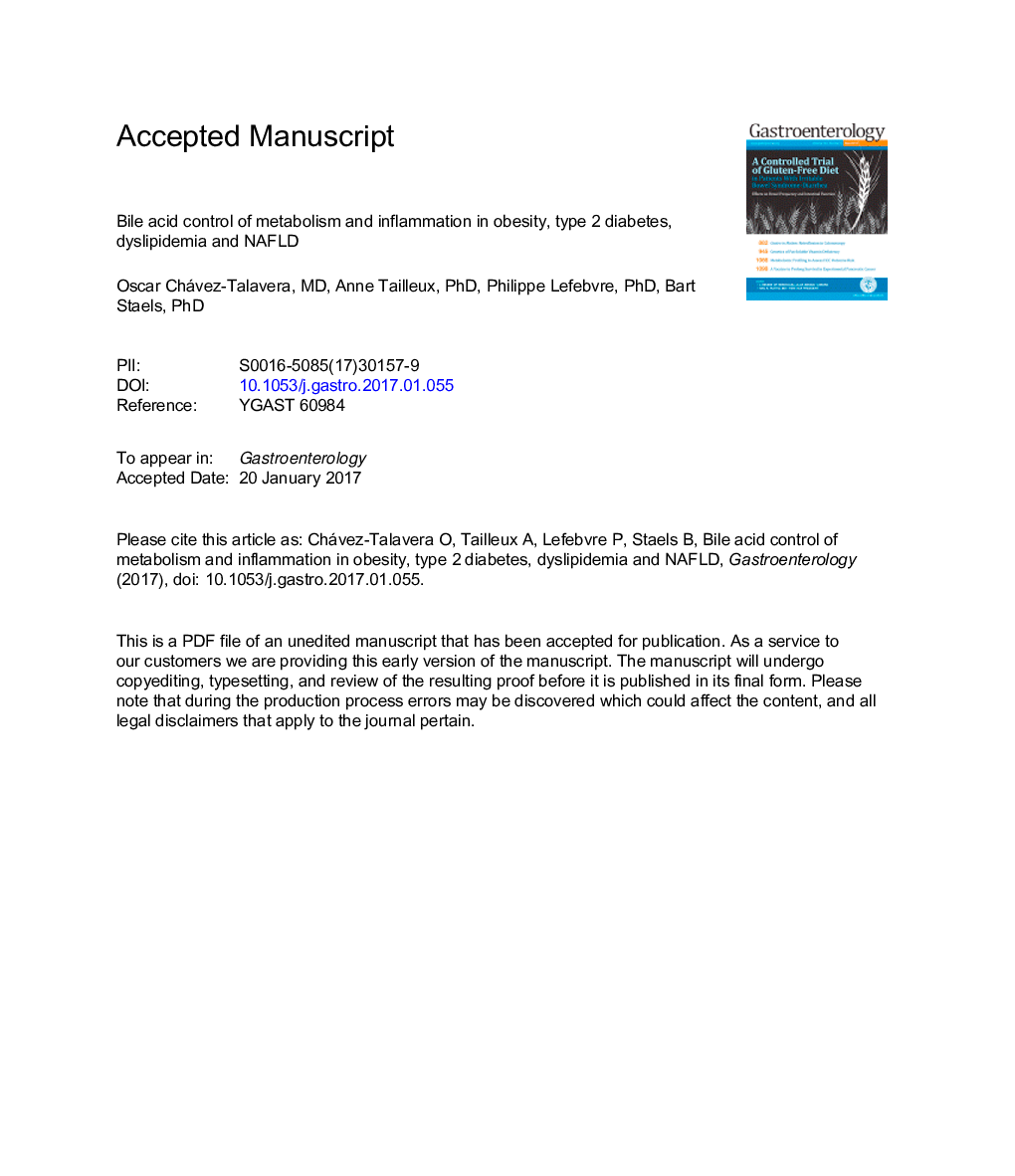| Article ID | Journal | Published Year | Pages | File Type |
|---|---|---|---|---|
| 5658776 | Gastroenterology | 2017 | 53 Pages |
Abstract
Bile acids are signaling molecules that coordinately regulate metabolism and inflammation via the nuclear farnesoid X receptor (FXR) and the Takeda G protein-coupled receptor 5 (TGR5). These receptors activate transcriptional networks and signaling cascades controlling the expression and activity of genes involved in bile acid, lipid and carbohydrate metabolism, energy expenditure, and inflammation by acting predominantly in enterohepatic tissues, but also in peripheral organs. In this review, we discuss the most recent findings on the inter-organ signaling and interplay with the gut microbiota of bile acids and their receptors in meta-inflammation, with a focus on their pathophysiologic roles in obesity, type 2 diabetes, dyslipidemia, and nonalcoholic steatohepatitis, and their potential therapeutic applications.
Keywords
BATOCACDCAFXRUDCAS1PRT2DGLP-1TGR5CCKRYGBLDL-RHFDVSGDCAUrsodesoxycholic acidMCACYP7A1NAFLDCYP8B1BSHHDLCYP27A1FGFSHPBAsfarnesoid X receptorhigh-density lipoproteinRoux-en-Y gastric bypassAsbtapoapolipoproteinLCAnonalcoholic steatohepatitisChenodeoxycholic acidDeoxycholic acidobeticholic acidBile acidLithocholic acidmuricholic acidCholic acidBile acidsbrown adipose tissueNonalcoholic fatty liver diseaseBile acid sequestrantType 2 diabeteshigh-fat dietfibroblast growth factorNash Bile salt hydrolaseglucagon-like peptide-1cholecystokininvertical sleeve gastrectomysphingosine-1-phosphate receptorLow-density lipoprotein receptor
Related Topics
Health Sciences
Medicine and Dentistry
Gastroenterology
Authors
Oscar Chávez-Talavera, Anne Tailleux, Philippe Lefebvre, Bart Staels,
